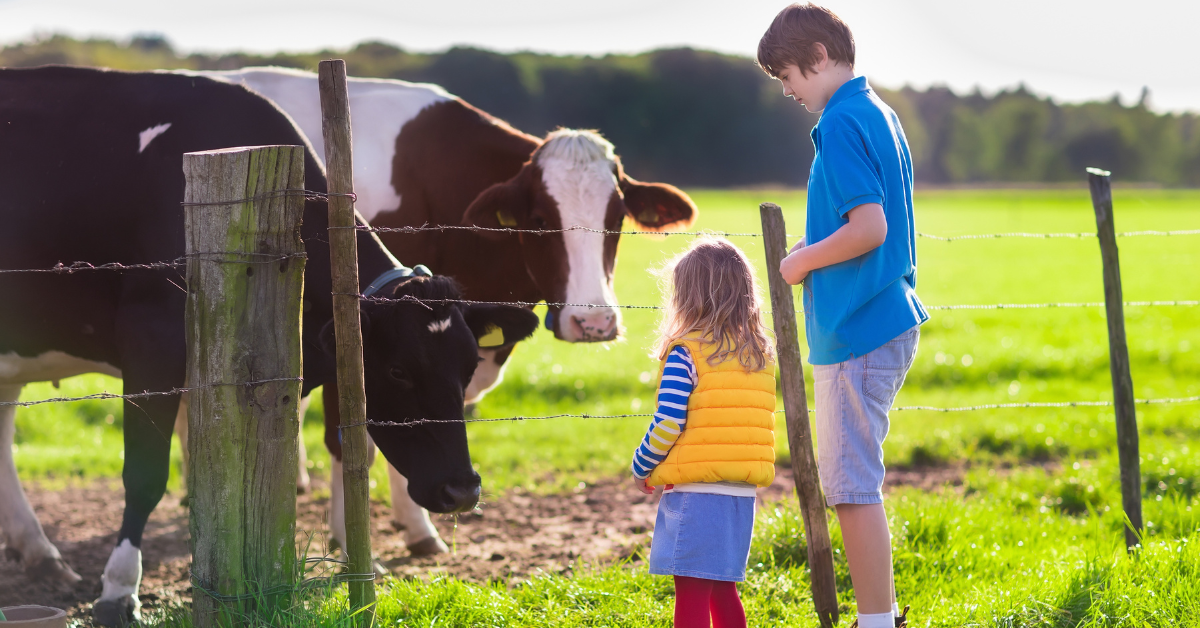
August 4, 2023
When hosting visitors on your farm, it's crucial to prioritize safety to ensure a memorable and risk-free adventure for all involved. In this blog, we dive into essential safety measures that every agritourism operation should implement.
Risk Assessment and Management
Before opening your farm to the public, you’ll want to conduct a thorough risk assessment of your property. Take a tour of your property, paying close attention to any potential hazards such as uneven terrain, dangerous equipment or machinery, and places where there could be interactions with animals. Once you have identified any potential hazards, develop a comprehensive risk management plan that outlines any changes you should make before welcoming visitors onsite, preventative measures you can take, emergency protocols, and the necessary equipment and resources to handle various safety issues that could arise.
Visitor Education
Assume most of your visitors haven’t grown up on or spent much time on a farm. Before getting started, it’s important to properly educate them about the unique environment they'll be entering. In your pre-event communications, provide clear guidelines on appropriate clothing, footwear, and any specific safety gear required. Conduct orientation sessions at the beginning of each tour, class, etc. to highlight safety rules and regulations. Hang informative signage throughout your property to remind visitors of potential risks, safety practices, and expectations.
Be sure to display your Act 31 sign at the entrance of each agritourism activity to help protect you from liability and remind visitors of the risk they are assuming by visiting a farm.
Supervision and Guided Tours
If possible, implement guided tours with knowledgeable and trained staff members. Guides can ensure that visitors follow safety guidelines and avoid potentially hazardous areas. They can also provide valuable insights about the farm, enhancing the overall experience while maintaining safety.
Safe Animal Interactions
Animal interactions are a primary driver for many people, especially families, who want to visit a farm. Establish protocols for how and when visitors can interact with your animals. Provide guidelines for feeding, petting, and approaching them, emphasizing the importance of respecting their space and behavior. Clearly mark areas where animals are not to be disturbed.
Safe Play Areas for Children
If your farm has play areas for children, prioritize safety in their design and maintenance. Regularly inspect equipment for wear and tear, sharp edges, or loose parts. Create boundaries and supervise play areas to ensure that children are safe at all times.
Hygiene and Sanitation
Maintain high levels of hygiene and sanitation, especially in areas where visitors might interact with animals or produce. Provide hand-washing stations with soap and clean water and encourage visitors to wash their hands after animal interactions and before consuming food.
Food Safety
If your farm offers food products, adhere to strict food safety guidelines. Ensure that food handling and preparation areas are clean and well-maintained. Train staff in proper food handling techniques and implement procedures to prevent contamination. Make sure your facilities and food-handling practices are up to code and that you have all necessary state and local permits.
Emergency Preparedness
Develop a comprehensive emergency response plan in collaboration with local authorities and emergency services. Conduct regular drills to familiarize staff with evacuation procedures, first aid protocols, and communication methods during emergencies – and maintain well-stocked first aid kits throughout the premises.
Infrastructure Maintenance
Regularly inspect and maintain all infrastructure, including buildings, pathways, and equipment. Repair any potential hazards promptly to prevent accidents. Make sure that structures are built to code and can withstand the unpredictable Vermont weather!
A well-planned and safety-conscious farm will not only provide unforgettable memories but will build a reputation of excellence and responsibility. Safety should always be the top priority to ensure that visitors have a positive and risk-free experience. By implementing the suggestions above, including a thorough risk assessment, educating visitors, maintaining safe play areas, and adhering to hygiene and emergency protocols, farmers can create an environment where both guests and staff can enjoy the farm while staying safe.
Thanks for reading the Marketing and Agritourism Blog! I’m your host, Kristen Brassard, Marketing & Agritourism Specialist at the Vermont Agency of Agriculture, Food & Markets. Stay tuned every other week for tips on marketing and incorporating agritourism practices on your farm and be sure to sign up for our Agriculture Development Newsletter so you never miss a post!

